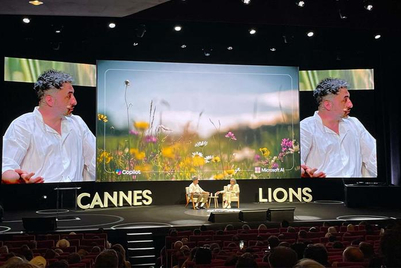
Between TikTok, YouTube, Instagram and Facebook, content creators who specialize in short-form video have a few options when it comes to sharing their work.
On the surface level, Instagram Reels, YouTube Shorts and TikTok are almost identical. But when it comes to the ability to monetize, creators are noticing differences.
TikTok, which popularized the short video format during the early days of the pandemic in 2020, is often still the go-to platform for creators to grow their followings. But many are also intrigued by a new revenue share program from YouTube, which pools and splits 45% of creators’ monthly Shorts revenues across the group.
TikTok also launched its first revenue share program in May, called TikTok Pulse, which offers a 50/50 split to creators at least 18 years or older with a minimum of 100,000 followers who have posted at least five videos within the last 30 days.
Meanwhile, Meta, which has been pushing hard into Reels, is struggling to keep creator attention or to monetize the product. Instagram changed its algorithm this summer to prioritize Reels before reversing course after receiving blowback from users.
���� There’s a lot happening on Instagram right now.
— Adam Mosseri (@mosseri) July 26, 2022
I wanted to address a few things we’re working on to make Instagram a better experience.
Please let me know what you think ���� pic.twitter.com/x1If5qrCyS
Creators still have huge followings that keep them on Instagram, but they aren’t able to monetize Reels to an extent that keeps them all-in on the platform.
“Instagram, personally, I feel will struggle slightly more,” said Nikki Melless, media director at Byte/Dept. “Instagram has gone from a connection-led platform, which people really valued it for, to now trying to be content-led, and that's led quite a few people to be unhappy about the changes … Reels, a lot of the time, is repurposed TikToks.”
Revenue shares
While many creators use each platform to varying degrees, they usually choose one or two to invest most of their efforts in, then divvy up existing or leftover content among the rest.
A platform’s utility for a creator comes down to its algorithm. Short-form video creators commonly invest wherever they have the biggest audience, usually by deciphering the algorithm and going viral through some combination of talent, strategy and luck.
Instagram is fitness creator Abhish Desai’s primary platform of focus, as it’s where he has the most followers at 540,000. Next up is YouTube and then TikTok, where he’s still experimenting with growing his following.
But despite housing his largest audience, Desai finds it most difficult to make money through Instagram Reels. Partly, that comes down to Instagram lacking a dedicated revenue-share model for Reels creators on Instagram. Reels only operates a revenue share program on Facebook currently, where creators receive 55% of the revenue from product displays at the bottom of their videos and ads that run in between videos.
Desai said that once YouTube launches its new partner program that allows creators to monetize Shorts, he’ll shift his focus to that platform.
“I do want to be able to make money in a more stable way, vs. Instagram Reels, where it’s impossible to make money at this point” he said.
Not all creator payment programs, however, are equal. Ross Smith, who makes comedic videos with his 95-year-old grandmother for over 75 million followers across platforms, was excited to be one of the first few involved in the TikTok Creator Fund, but was disappointed when he found out the very small percentage of revenue he’d see through the program.
TikTok doesn’t share much about how it pays creators, but says remuneration depends on “the number of views and the authenticity of those views, the level of engagement on the content, as well as making sure content is in line with our Community Guidelines and Terms of Service.”
But according to Smith, “Unless you’re getting obnoxious views, you’d never be able to afford [to live on] it.”
As for Reels, monetizing that product on Instagram in an “ongoing battle,” Smith said.
Brand access
Lucrative creator fund programs, however, are costly for platforms. So they try to entice creators with other bells and whistles.
Exposure to brands, which YouTube and TikTok both have through BrandConnect and Creator Marketplace, are big incentives, alongside subscription models. Both offerings highlight select creators with various followings that are eligible for sponsored videos and branded campaigns.
The sheer volume of attention TikTok in particular gets from users and brands puts it ahead in terms of its ability to help creators monetize, said Sadie Miller, SVP of social media strategy and partnerships at Reprise.
“TikTok payouts tend to be smaller from the platform itself than what Instagram right now is shelling out,” she said. “But the brand deals feel a bit more lucrative on TikTok right now because that's where all of the hype is.”
On YouTube, access to the Shorts Creator Community, where a Shorts instructor can guide creators with networking events, workshops and updates on best practices, is a nice perk.
Instagram pointed to its Creator Lab, a hub where Reels creators can meet each other and share tips on how to succeed.
But advertisers are keeping a close eye on which platforms creators prioritize when allocating their media spend – and they’re noticing that Meta is lagging.
“Meta is behind TikTok and [YouTube],” said Jon Morgenstern, VaynerMedia’s SVP, head of investment. “They’re the last to figure out how to make influencers work on their platform.”
Additional reporting by Jessica Heygate


.jpg&h=334&w=500&q=100&v=20250320&c=1)



.png&h=334&w=500&q=100&v=20250320&c=1)



.png&h=334&w=500&q=100&v=20250320&c=1)



.jpg&h=268&w=401&q=100&v=20250320&c=1)
.jpg&h=268&w=401&q=100&v=20250320&c=1)
.png&h=268&w=401&q=100&v=20250320&c=1)
.png&h=268&w=401&q=100&v=20250320&c=1)

